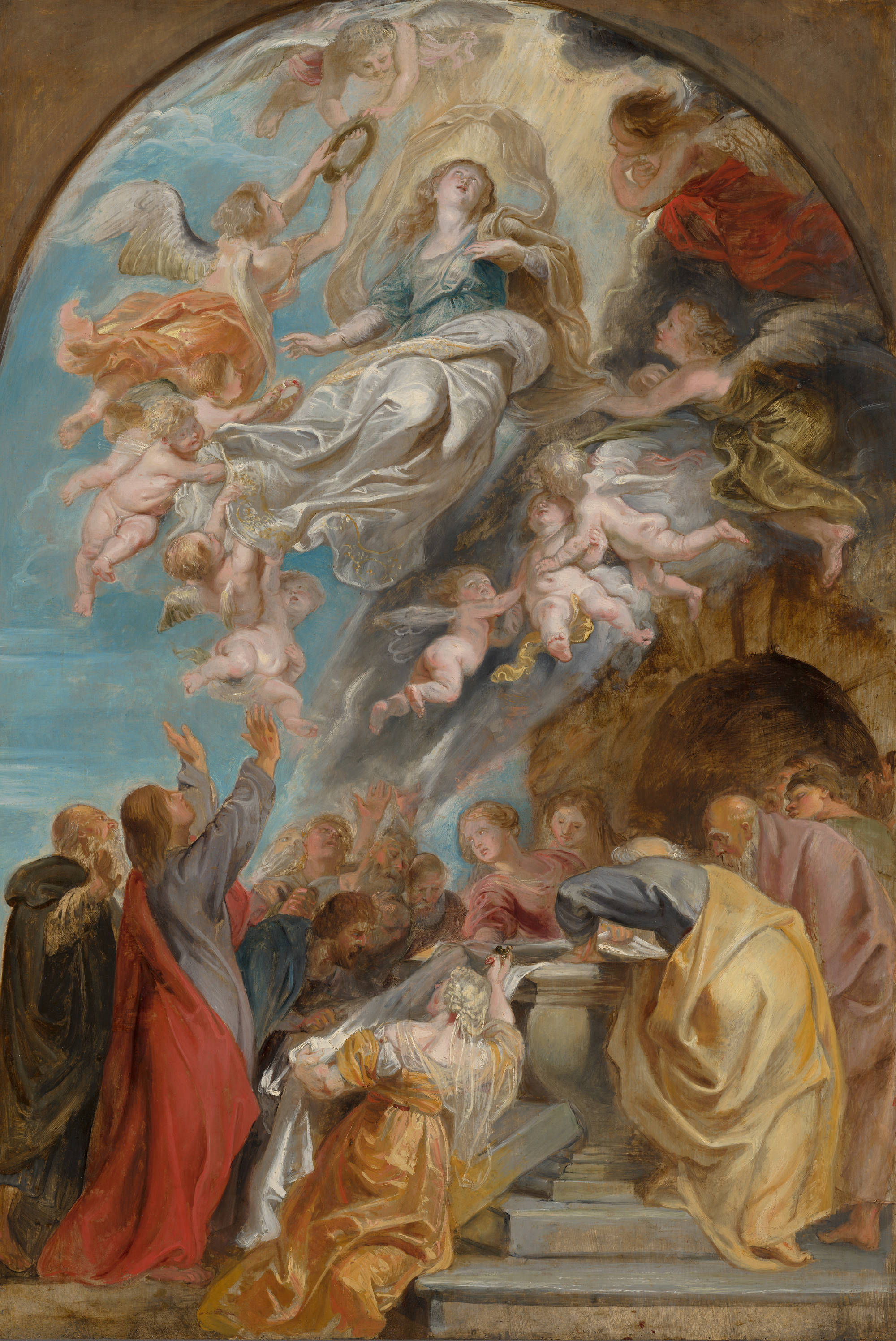On 12 November 1619 a contract was signed between Johannes del Rio, dean of the Church of Our Lady in Antwerp, and Peter Paul Rubens. In it, the painter stated that he would paint a panel depicting either the Assumption or the Coronation of Our Lady, for a fee of 1,500 guilders. The choice eventually fell on an Assumption, but the execution took some time.
As the first stage of producing this monumental composition, Rubens painted the ‘modello’ seen here, between 1622 and 1625. This preliminary study was intended to give the client an idea of what the eventual composition would look like, so that he could comment on it at an early stage. These preliminary studies by Rubens can best be described as thoughts or ideas expressed in paint. The cursory execution this implies is clearly visible in the technique: the paint was applied in rapid, casual strokes.
The upwardly directed movement gives the scene a highly dynamic quality. Rubens introduced this intentionally, since the altar was surmounted by a statue of Christ wearing Mary’s crown, with God the Father seated above. Seventeenth-century churchgoers could therefore see the destination of the Virgin’s ascent. Several of the figures around the open grave are extremely agitated; they are gazing into the empty grave in astonishment or raising their arms to the Virgin Mary in a gesture of adoration. Their rigid poses contrast sharply with Mary’s fluttering robe and the swift movements of the angels surrounding her.
Because the high altar for which the painting was intended was not completed until the spring of 1626, a long time elapsed between Rubens’s acceptance of the commission and its eventual execution. The monumental altar, sculpted in stone by the brothers Robrecht and Jan de Nolde, was fourteen metres high and seven metres wide. On 11 May 1626 four porters received drinking money for installing the huge panel, which was almost five metres high and over three metres wide. Immediately after this Rubens started on the painting, although he had wanted to leave the city to escape from the rampant plague epidemic. On 20 June his wife, Isabella Brant, succumbed to this dreaded disease. The high altar was demolished during the French Revolution (1789-1799), but Rubens’s painting still hangs the Church of Our Lady in Antwerp.
(this is a reworked version of a text published in in: P. van der Ploeg, Q. Buvelot, Royal Picture Gallery Mauritshuis: A princely collection, The Hague 2005)







